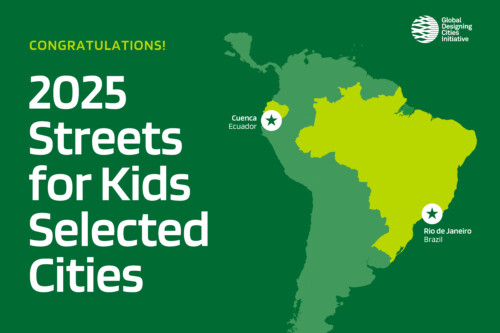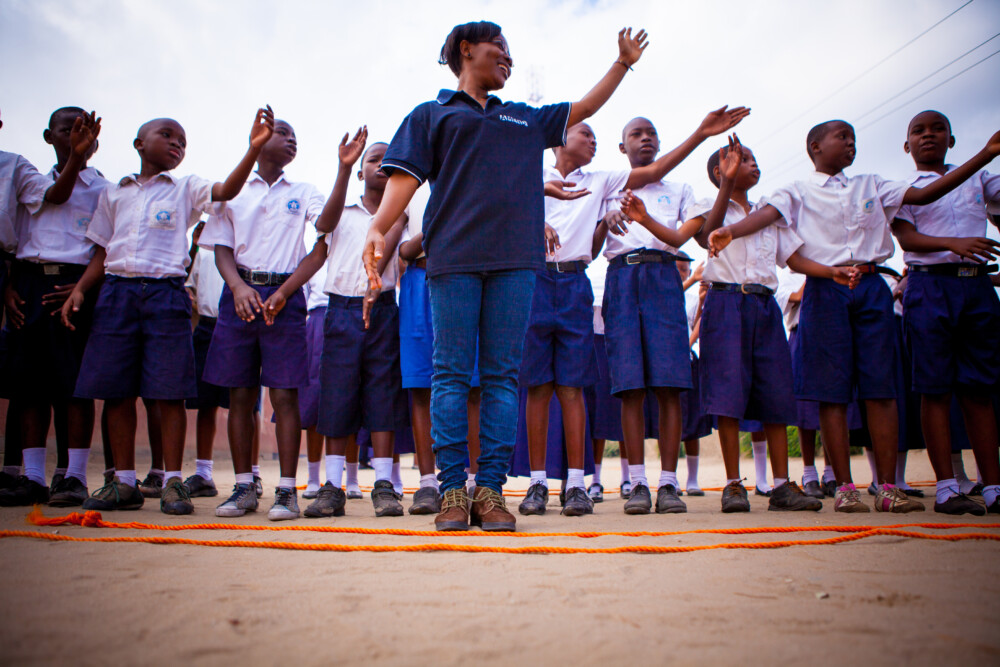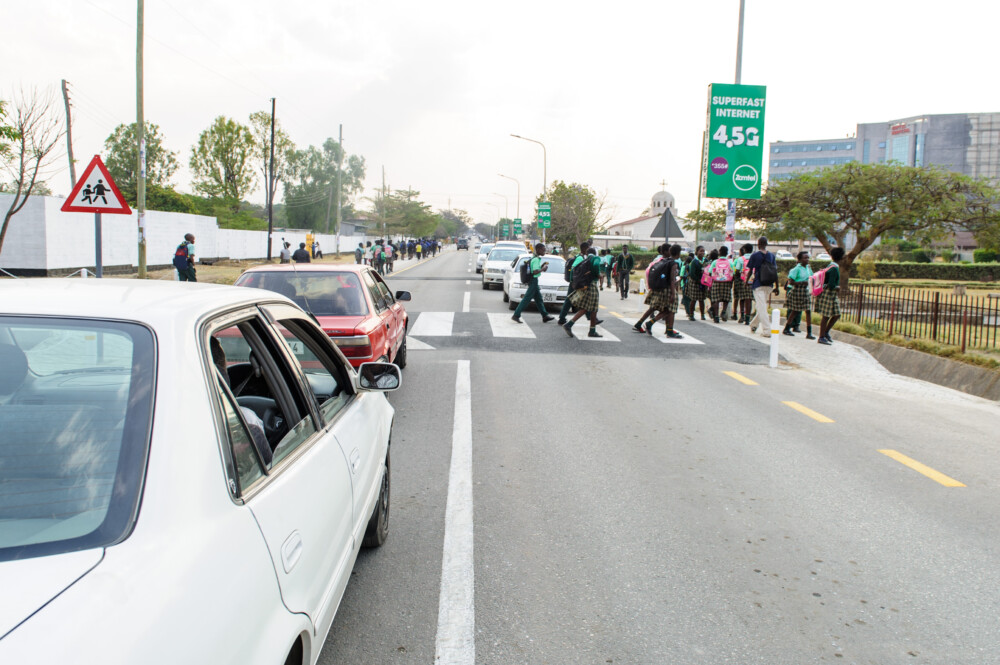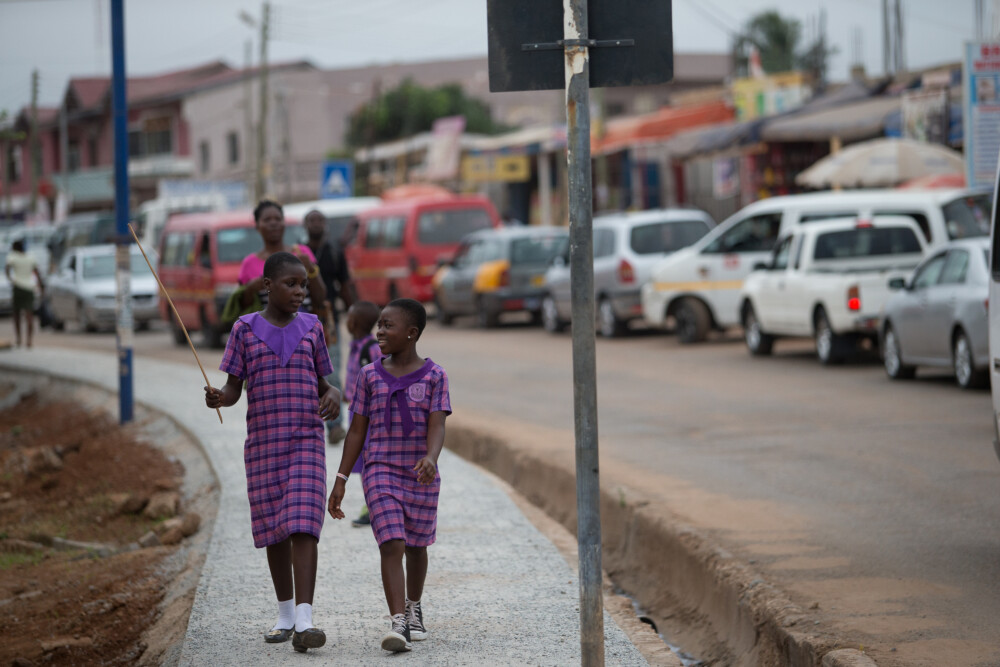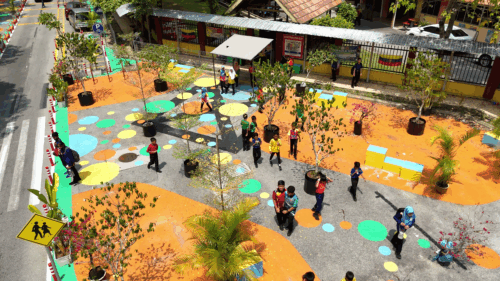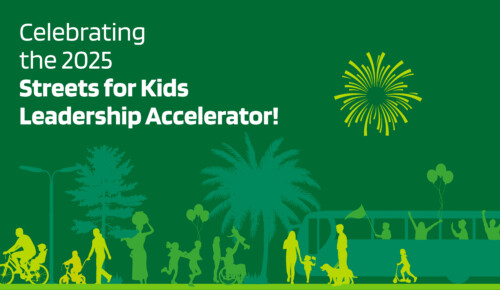GDCI Street Shaper of the Month
Ayikai Poswayo
Program Director, Amend, Accra, Ghana (but working across Africa)

Ayikai manages and directs Amend’s School Area Road Safety Assessments and Improvements (SARSAI) Program, including overseeing and training teams to improve safety for children on the roads around their schools. Her favorite part of this role is visiting schools to meet the children at risk of road traffic injury who are directly impacted by Amend’s work.
Please tell us about your work on urban streets and/or mobility.
The SARSAI program involves identifying schools where children are at high risk of road traffic injuries on their journeys to school, carrying out quantitative and qualitative assessments at the schools, coming up with infrastructure proposals to improve safety, and supervising the construction of low-cost yet life-saving measures outside the schools. Road safety lessons are then given to the children at the schools. All these activities are carried out with permission from and in collaboration with the relevant government entities, as well as other stakeholders. The program is currently being implementing across nine countries on the African continent.
What are the biggest mobility and/or road safety challenges in your city?
The lack of consideration and hence provision for vulnerable road users, such as pedestrians, is a big concern. Many times, pedestrians have to compete for road space with vehicles traveling at incompatible speeds. This puts them at particularly high risk of road traffic injury and death.
What is it like to be a pedestrian in your city?
Scary! Visiting one of the schools where we were working in Ghana, I traced the journey of some children who crossed the infamous N1 Highway in Accra at grade in order to get to school. It was a terrifying experience and it made me wonder how children less than half my size and one-fourth my age manage to make that journey five times a week, without more injuries and deaths occurring than are already known.
Tell us about an innovative urban project(s) or approach(es) that has inspired your work.
One of my inspirations is the woonerf (living streets) concept from the Netherlands, which offers a safe shared space environment for various road users. My dream is to have one of these ‘shared spaces’ outside a school in an African city, where the majority of children walk or cycle.
What is the biggest challenge or most common roadblock you face in implementing innovative projects in your city?
One of our challenges is the lack of government receptivity to new approaches to tackle road safety challenges around schools.
What mobility, public space, or road safety improvements would you like to see in your city by 2030?
I would like to see roads and streets designed with considerations for all road users, including pedestrians and cyclists, and with special consideration given to children and persons with disabilities.
